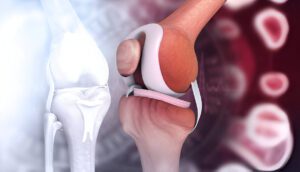Mastering the Art of Recovery After Meniscus Surgery
Recovering from meniscus surgery is a crucial phase that requires patience and a well-thought-out strategy. Whether you’re an athlete eager to return to the game, a post-surgery patient navigating recovery, or a physical therapist guiding clients through rehabilitation, managing pain effectively can make all the difference. This blog post will guide you through the essentials of pain management after meniscus surgery, offering insights and practical tips that cater to your specific needs.
You’ll learn about the meniscus’s vital role in the knee joint, effective pain management strategies post-surgery, and the importance of rehabilitation and physical therapy. We’ll also explore the benefits of nutrition and lifestyle changes, alternative pain management techniques, and share inspiring success stories and expert insights. By the end of this post, you’ll have a comprehensive understanding of how to manage pain and engage in a successful recovery process.
Understanding the Meniscus and Its Role

The meniscus is a C-shaped piece of cartilage situated in the knee joint, acting as a cushion between the thigh bone and shin bone. It plays a vital role in stabilizing the knee, absorbing shock, and distributing weight evenly across the joint. This essential component of the knee joint ensures smooth and pain-free movement, which is crucial for athletes and active individuals alike.
Unfortunately, the meniscus is prone to tears and injuries due to its limited blood supply and the high-stress nature of its location. Common causes of meniscus injuries include sudden twists or turns, particularly during sports activities such as football, basketball, or soccer. When the meniscus is damaged, it can lead to pain, swelling, and limited mobility, often necessitating surgical intervention to restore knee function.
Meniscus surgery involves repairing or removing the damaged cartilage to alleviate symptoms and prevent further damage to the joint. While surgery is a significant step towards recovery, it’s just the beginning. Proper pain management is essential to ensure a smooth and successful recovery process.
Managing Pain Post-Surgery
Pain management is a critical aspect of recovery after meniscus surgery. Effective pain control not only enhances comfort but also promotes healing and reduces the risk of complications. Immediate post-surgical pain management focuses on minimizing discomfort and swelling while promoting mobility in the early stages of recovery.
One of the most common techniques for managing pain immediately after surgery is the RICE protocol (Rest, Ice, Compression, Elevation). Resting the knee and applying ice packs can help reduce swelling, while compression bandages and elevating the leg can further alleviate pain. Pain medications, prescribed by your doctor, may also be used to provide relief during the initial recovery phase.
Long-term pain management strategies focus on addressing chronic pain and preventing flare-ups. This may include the use of non-steroidal anti-inflammatory drugs (NSAIDs), physical therapy exercises, and lifestyle modifications. By actively engaging in these strategies, you can effectively manage pain and work towards a full recovery.
Rehabilitation and Physical Therapy

Rehabilitation and physical therapy play a crucial role in the recovery process after meniscus surgery. A structured rehabilitation program can help restore knee function, improve strength and flexibility, and prevent future injuries. Physical therapy exercises are designed to gradually increase the range of motion, strengthen the muscles surrounding the knee, and improve overall joint stability.
Common exercises and stretches for meniscus surgery recovery include straight leg raises, heel slides, and quad sets. These exercises target the quadriceps and hamstrings, helping to rebuild muscle strength and support the knee joint. Stretching exercises, such as calf stretches and hamstring stretches, can also enhance flexibility and prevent stiffness.
Your physical therapist will develop a personalized rehabilitation plan tailored to your specific needs and progress. Regularly attending physical therapy sessions and performing the prescribed exercises at home are essential for achieving the best possible outcomes in your recovery.
Nutrition and Lifestyle Changes
Nutrition and lifestyle choices can significantly impact pain management and recovery after meniscus surgery. A well-balanced diet rich in anti-inflammatory foods can help reduce inflammation and promote healing. Incorporating foods such as fatty fish, nuts, seeds, and leafy greens into your diet can provide essential nutrients and support your recovery process.
Additionally, staying hydrated by drinking plenty of water can help flush out toxins and maintain joint health. Limiting the intake of processed foods, sugar, and unhealthy fats can also aid in reducing inflammation and improving overall well-being.
Lifestyle changes, such as maintaining a healthy weight, getting enough rest, and managing stress, can further enhance your recovery. By adopting a holistic approach to pain management and recovery, you can optimize your healing process and achieve long-term success.
Alternative Pain Management Techniques
In addition to traditional pain management strategies, alternative techniques can provide relief and support your recovery after meniscus surgery. These non-traditional approaches can complement conventional methods and offer additional benefits for managing pain and promoting healing.
Acupuncture, a traditional Chinese medicine practice, involves inserting thin needles into specific points on the body to stimulate the body’s natural pain-relief mechanisms. This technique has been shown to reduce pain and inflammation, improve circulation, and promote relaxation.
Mindfulness practices, such as meditation and deep breathing exercises, can help manage pain by reducing stress and promoting a sense of calm. These techniques encourage a mind-body connection, allowing you to focus on the present moment and develop a greater awareness of your body’s sensations.
Other alternative pain management strategies may include massage therapy, chiropractic care, and the use of essential oils. By exploring and incorporating these techniques into your recovery plan, you can enhance your pain management efforts and support your overall well-being.
Success Stories and Expert Insights
Hearing from others who have successfully navigated the recovery process after meniscus surgery can be inspiring and motivating. Personal stories from athletes and patients who have effectively managed pain and returned to their active lifestyles can provide valuable insights and encouragement.
For example, professional athletes have shared their experiences with meniscus surgery and recovery, highlighting the importance of adhering to a structured rehabilitation program, maintaining a positive mindset, and seeking support from medical professionals. These success stories emphasize the critical role of determination and perseverance in achieving a successful recovery.
Additionally, insights from physical therapists and surgeons can offer expert advice and guidance on effective pain management techniques. These professionals can share their knowledge on best practices for recovery, tips for avoiding complications, and strategies for optimizing the healing process.
Recovering from meniscus surgery requires a comprehensive approach to pain management and rehabilitation. By understanding the role of the meniscus, implementing effective pain management strategies, and engaging in a structured rehabilitation plan, you can optimize your recovery and return to your active lifestyle.
Adopting a holistic approach that incorporates nutrition, lifestyle changes, and alternative pain management techniques can further enhance your healing process. Success stories and expert insights can serve as valuable resources and motivation as you navigate your recovery journey.
We encourage you to take an active role in your recovery, seek professional guidance, and share your own experiences and tips with others. By doing so, you can contribute to a supportive community of individuals committed to achieving successful outcomes after meniscus surgery. Explore related content and services for further support and guidance as you continue on your path to recovery.

